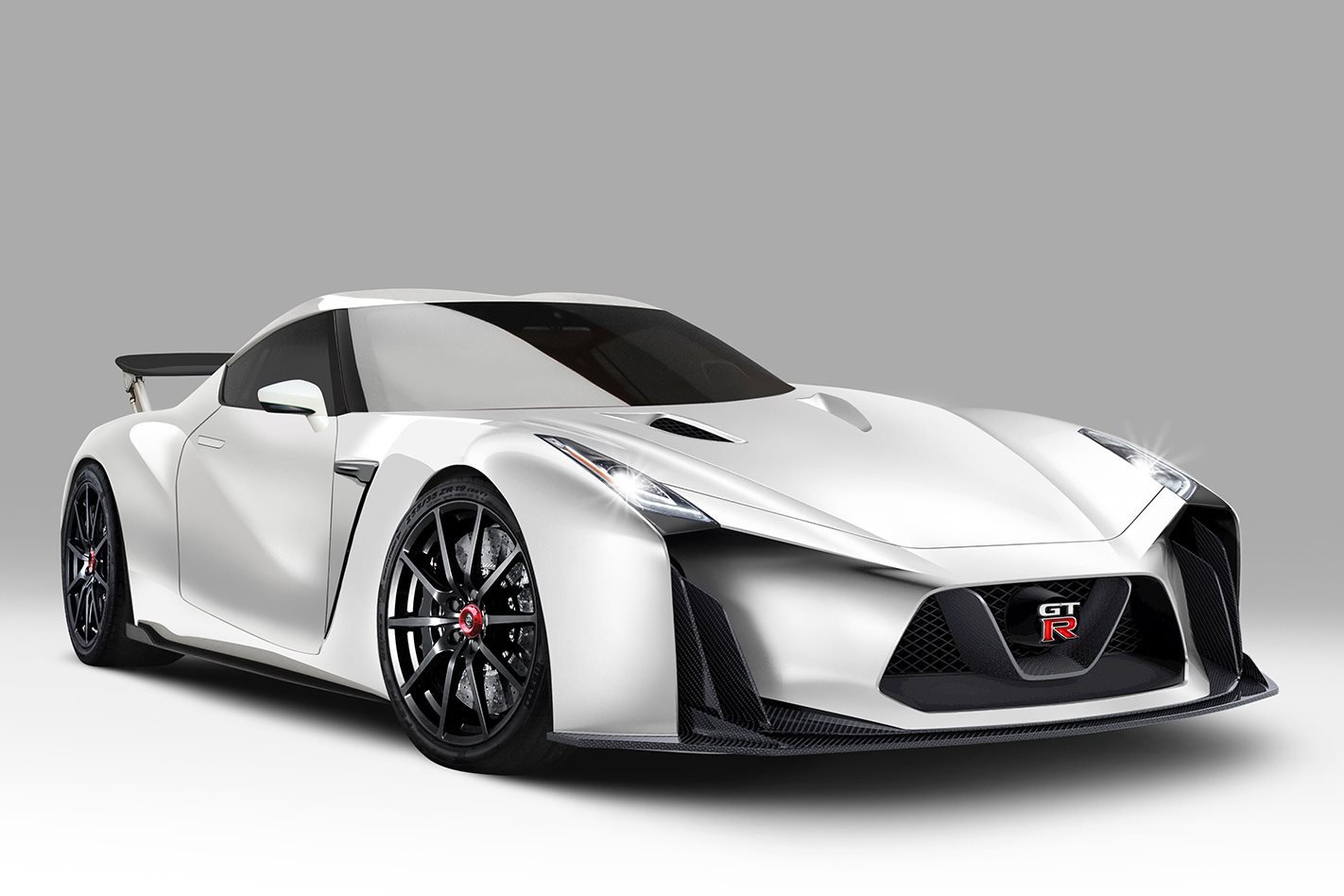The next generation R36 Nissan GT-R is not the car that Mr GT-R, former chief engineer Kazutoshi Mizuno, would build.
The outspoken race engineer, who reported directly to Carlos Ghosn for over a decade, was a stickler for his chosen philosophy – to create a multi-purpose supercar that anyone could drive safely at half the cost of European rivals.
That philosophy has been hurled out the proverbial window. Nissan wants to utilise its absolute max potential and create a hypercar to rival the likes of McLaren’s P1 or Porsche’s 918 Spyder. It doesn’t want a vanilla-flavoured coupe anymore. It wants double chocolate with extra cocoa.
To achieve that goal, the company is using everything in its parts bin, both racing- and road-going.
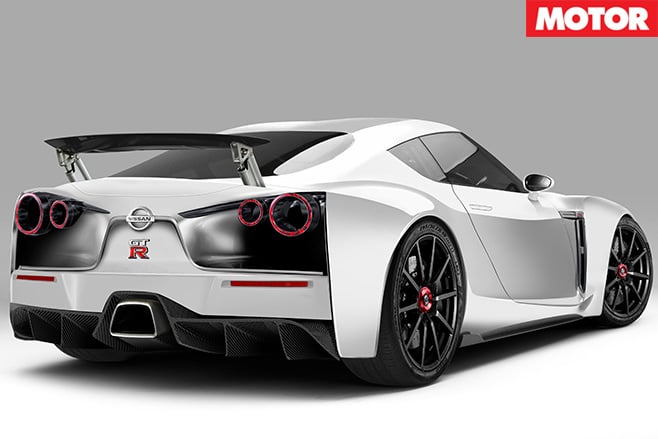
The new two-door will look a lot more stylish than the current edgy Transformer-ish GT-R, will lose around 250kg, corner like a race car, pack a new hybrid powertrain with over 578kW, and land in showrooms with a sticker price north of $200,000. Proper supercar territory.
According to a source close to Nissan, the car’s significant weight loss, which will result in a 1500kg weight figure, will come about through extensive use of carbonfibre body parts and a reconfiguration of the interior layout minus the two rear seats.
We are hearing that high carbonfibre production costs in Japan mean these lightweight parts will most likely be manufactured in the United Kingdom. Given it will be a low volume model, Nissan isn’t worried about shipping costs of getting such parts to Japan.
One thing the company does care about are the lines on the R36, which will evolve from the current car’s styling. We are told the new GT-R will not only employ a full Le Mans LMP-spec carbonfibre cowling, but incorporate hints from the Nissan Concept 2020 Vision Gran Turismo, unveiled at the
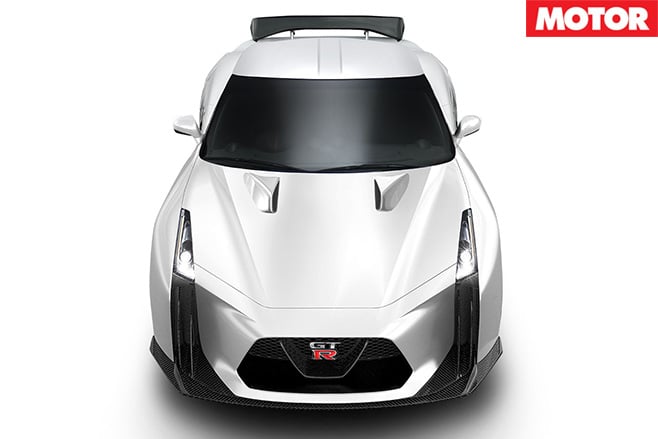
Nissan will enter a race version of this hybrid hypercar in the 2015 Le Mans 24 Hour. And much of the technology employed in the R36 will be a combination of technology from the current R35 and the GT-R LM Nismo.
In the same way Nissan has been using ‘pure drive’ to label its most efficient vehicles, the company will employ the ‘R Hybrid’ moniker for the high performance sports hybrid and others it creates.
Nissan is happy with the power delivery of its iconic twin-turbo 3.8-litre V6, transaxle layout and all-wheel drive powertrain, so that will remain. What’s different is the electric motor that will be bolted on just aft of the engine. Nissan wants to employ a hybrid system for one reason: to boost power. It wants maximum power hovering around 578kW and to get there, the GT-R needs a hybrid unit.
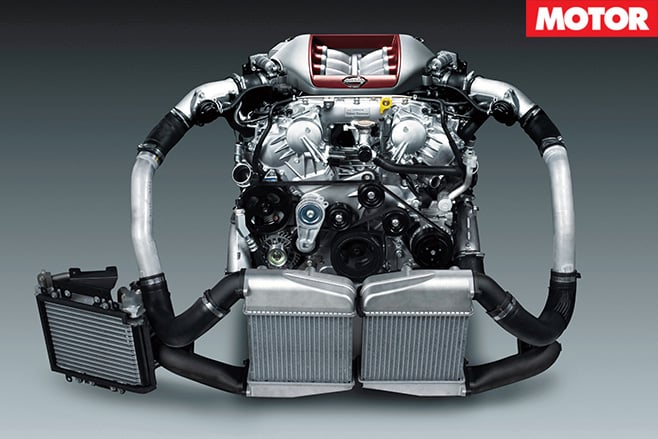
Adding an electric motor will boost maximum torque to around 1000Nm, requiring the total redesign of the transmission, which, by the way, will be eight-speed. This will give engineers a chance to rethink the current car’s gearbox.
One irritation plaguing engineers is the efficient cooling of batteries used in the new hybrid system.
This is where the Le Mans experiment should pay off as engineers find ways to deal with the huge amounts of regenerative brake energy and heat issues created under heavy braking, and thenthe sizable energy required when accelerating hard.
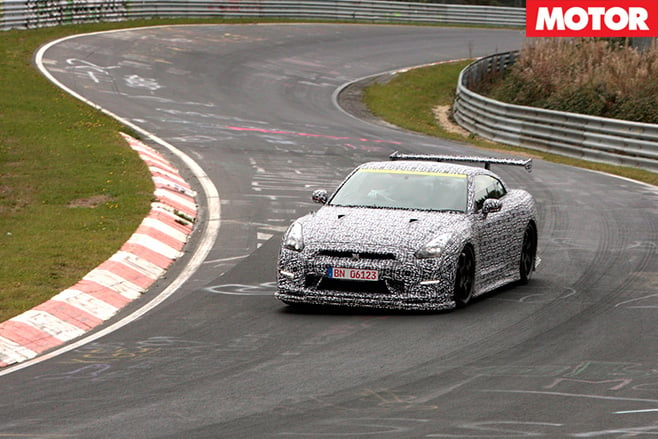
As our insider pointed out, “that is why the styling of the new GT-R will have to be so radically different. It’ll have to be penned to enable much more efficient cooling for the hybrid system as well as more efficient aerodynamics.” That’s where the company’s collaboration with Williams comes in handy.
While the F1 team is not adept at producing road cars, it does have state-of-the-art wind tunnel facilities to design the very best aeroparts (the outfit was consulted to develop the Nismo GT-R’s aero package) and it can offer development help for next-generation hybrid systems currently being used in F1.
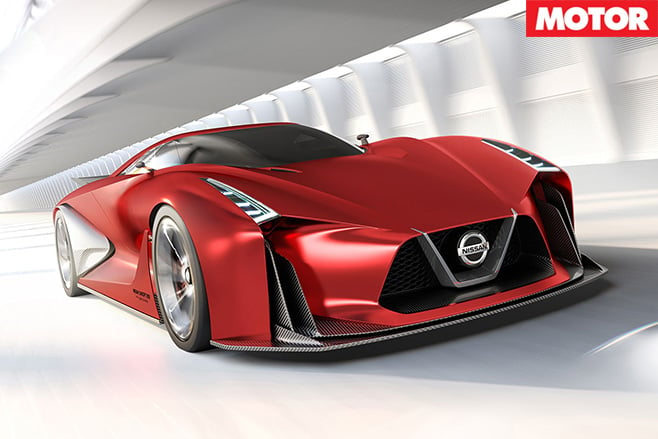
Our source also says that the VR37DETT engine being considered by Infiniti for a Porsche Panerama rival will not be used in the next GT-R.
All active
Nismo’s current ties with Williams F1 could see the UK firm have a significant influence on aerodynamics. A carbon adjustable wing with DRS-style activation could feature. This year’s Nismo GT-R Le Mans will debut solid hints to the production version.
New form
GT-R to become a strict two-seater in a bid to shrink dimensions and save weight. Target is an ambitious 1500kg, despite the added heft of various hybrid systems.
Gear solid
Nissan’s current drivetrain layout (front mounted V6, rear transaxle, all-wheel drive) will remain, but hybrid’s potential will call for a stronger version of the dual-clutch transmission that was built for the R35. Word is it will use eight gears.
To the max
Considering the GT-R’s VR38DETT was introduced in the current R35 it’s hard to imagine Nissan will develop a new unit. Good news is the engine still has plenty of potential left in it and the Nismo’s GT-R 441kW could be upped to 478kW.
And all up?
Even if the hybrid system is only able to add 100kW it would satisfy the projected target of 578kW. Torque is expect to rocket, though, with twist suggested to reach somewhere around 1000Nm.
Zap it good
It’s public knowledge Williams is working with Nissan on electrification products while at the same time Nissan has trademarked the ‘R Hybrid’ name for its performance hybrid models.

